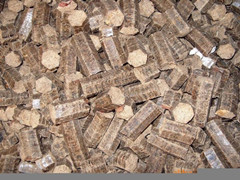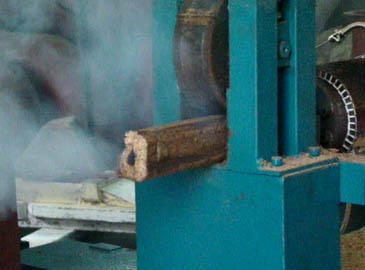Briquetting Technique
1.Advantages of briquettes
Briquetting machines cover a wide range such as biomass briquette machines, coal briquette machines, metal briquetting presses and so forth. Especially, biomass briquetting presses, as a kind of maturely developed equipment, are extensively serving clients across the globe. Besides, thanks to the compacted structure and high density and after the extruding process, feedstock will become from less than 100 kg/m3 to typical 1000 to 1100 kg/m3. Briquettes can be stored with about 10 times less space so that the costs on transportation and storage will favorably decrease, on the other hand, its heating efficiency is way much higher than that of the conventional fuel, for example coal or directly burned wood sticks or sawdust.
Alternatively, carbonized briquettes can be produced by using kilns or other charring equipment provided by KMEC to maximize the added value of waste materials.
2. Application scope of raw materials and generally produced briquette sizes
Material which can be put into use covers agro waste such as rice husks, corn cobs, peanut shells, sunflower seed shells, coconut shuck, coffee grounds, straw stalks; and wood waste including a variety of trees and shrubs, sawdust, saw shavings, twigs and branches.
Finished products are commonly seen as in round, square or polygon shape with its diameter of 50mm to 80mm but the cross section dimension can be premeditated based upon the clients’ requests.
Album of Some Raw Materials (Feedstock)
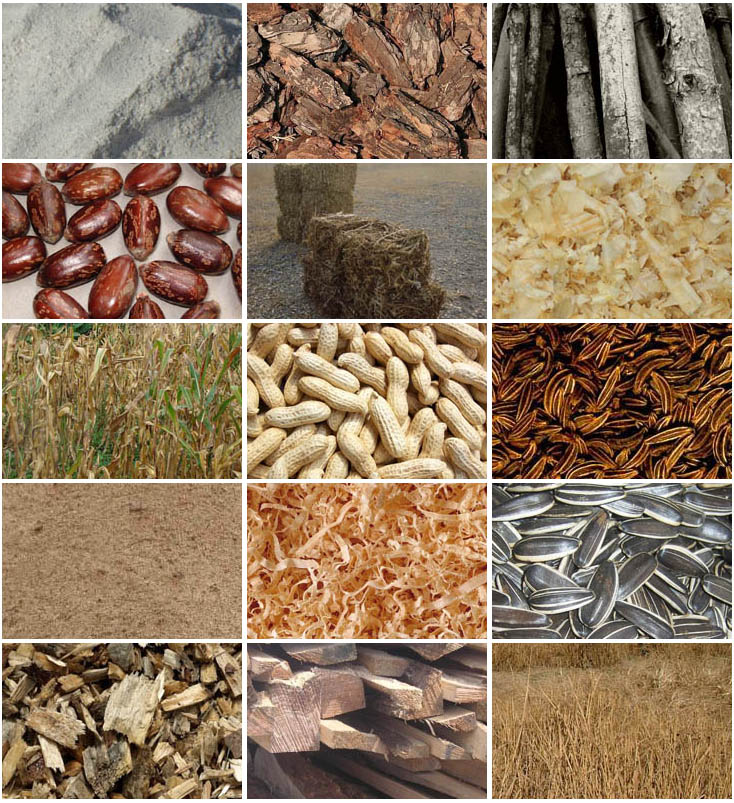
Fuel value of a variety of substances
| Name of raw material | Fuel value(Kcal/kg) |
| Bark (wood) | 3900 |
| Bagasse (Sugar cane) | 4200 |
| Bamboo dust | 3700 |
| Cotton stalks | 3800 |
| Maize stalks | 3800 |
| Pine needles | 4000 |
| Rice husks | 3500 |
| Sar khanda grass | 3700 |
| Coffee husks | 4200 |
| Peanut shell | 4000 |
| Castor seed shell | 4000 |
| Jute waste | 4500 |
| Sugar mill waste | 3300 |
| Sugar cane trash | 3500 |
| Wheat straw | 3700 |
| Arhar stalik | 4000 |
| Saw dust | 4000 |
| Heavy furnace oil | 9900 |
| Kerosene | 8900 |
| Diesel | 9400 |
| LPG | 9400 |
| Coal grade B | 5000 |
| Coal grade C | 4000 |
| Fire wood | 3300 |
| Charcoal | 6000 |
| Calorific value of briquettes “white coal” | 4000 |
Basic parameters of briquettes
| Name | Value |
| Density | 1.1-1.3g/cm3 |
| Fuel value | 3700kcal-5000kcal |
| Sulfur dioxide emissions | 0.38% (lower than the national standard 1-3%) |
| Carbon dioxide emissions | 0.22% (far below the national standard) |
| Eco-friendly&recyclabe | recycled as agricultural potash fertilizer |
| Residue on ignition (ash) | 3.6% |
3. Briquetting process
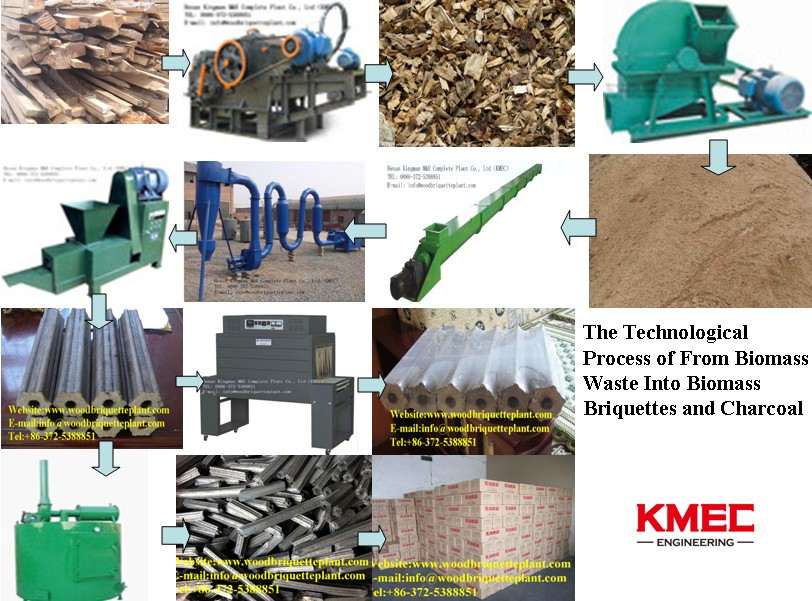
Technically, biomass briquetting press, as the main part of an entire briquetting process, plays a pivotal role in the transformation of biomass residuals and screenings into biomass briquettes. Furthermore, biomass briquettes can be processed into charcoal sticks
However, the technological process not only includes briquetting per se, but also a complete production line which generally includes other steps joined with such auxiliary equipment as those for wood chipping, pulverizing, sifting, drying and packaging as a whole.
The important factors influencing the result of briquetting dramatically
- Generally, agro or wood waste remains liberated, filled with lignin content which acts as an adhesive coherently binding feedstock together during the high temperature and high pressure (HTHP) process. However, with regard to different material characters, KMEC can design the most suitable briquette machine models for you distinctively; for instance, wood material can be divided into soft wood and hard wood, at times, soft wood like pinewood can be easily manufactured while some hard wood like xylosma from time to time can be handled well too;
- Whether the feedstock is purified or not will impact the briquetting outcome, and ignorance of purification to raw material may result in damages to the machines. So sifting cannot be omitted;
- The sizes of them are also distinct. For the convenience of briquetting, raw material size shall be kept around 3 or 4mm, not more than 10mm. In this regard, bigger size material offered by you shall be either chipped or crushed or in both manners before further processing;
- Moisture content is another decisive factor upon raw material, about 10-12%. As it stands, a drying system may be necessary;
- Feeding speed also wields a certain impact upon the process;
- Compression ratio of briquette presses distinguishes from one to another due to requirements of different materials. To this end, customized design and model served by KMEC will have clients with varied requires satisfied.
- Temperature shall be taken into consideration as well during the briquetting process. Briquette machines are usually equipped with heating coil. It is quite imperative that the coil (is also called the heater) be switched on before briquette machines are started so that briquettes during squeezing can obtain sufficient heat. Besides, the temperature can be adjusted due to different materials put into practice. Mostly, heating temperature stays 170 degrees Celsius to 350 degrees Celsius or so.
4. Auxiliary equipment
Apart from briquette machines, a complete plant served by KMEC also possibly includes other machines according to the description above, namely wood barking machine, wood chipper (to get bigger branches or logs cut into pieces), crusher (or hammer mill to have wood pieces cut into required dimensions), drying system (integrated with dryer, burner, pipeline,), exhaust pipe, draught fan, air lock, screw conveyer or belt conveyer, packing machine or sealing machine. They will be tailored in accordance with distinguished requirements from clients, or alternatively, KMEC designers will offer the considerate and optimized solutions for you.
5.Carbonization of briquettes
Briquettes can be used widely as fuel into domestic fireplaces, boilers or applied to industrial use on the one hand. And on the other hand, after the abovementioned briquetting process, they can be further processed, specifically, carbonized into charcoal. Carbonized kilns or other relevant equipment can be tailor-made by KMEC. Carbonized briquettes are also an ideal fuel for BBQ (barbeque).
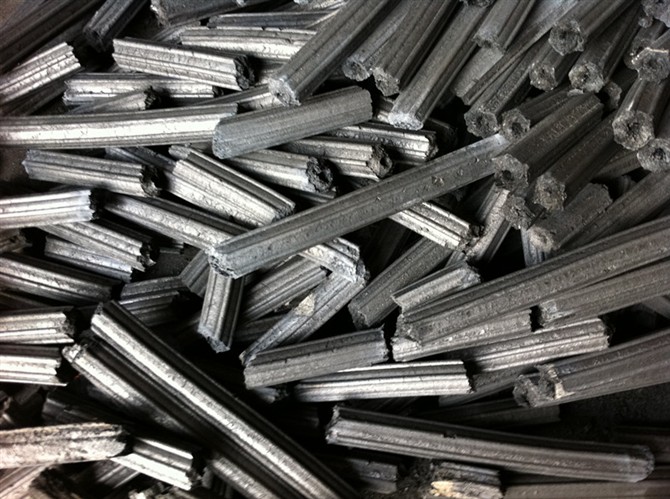
KMEC is capable of offering a package of project with delicate designs and high-quality equipment to move forward with clients from all over the world!


